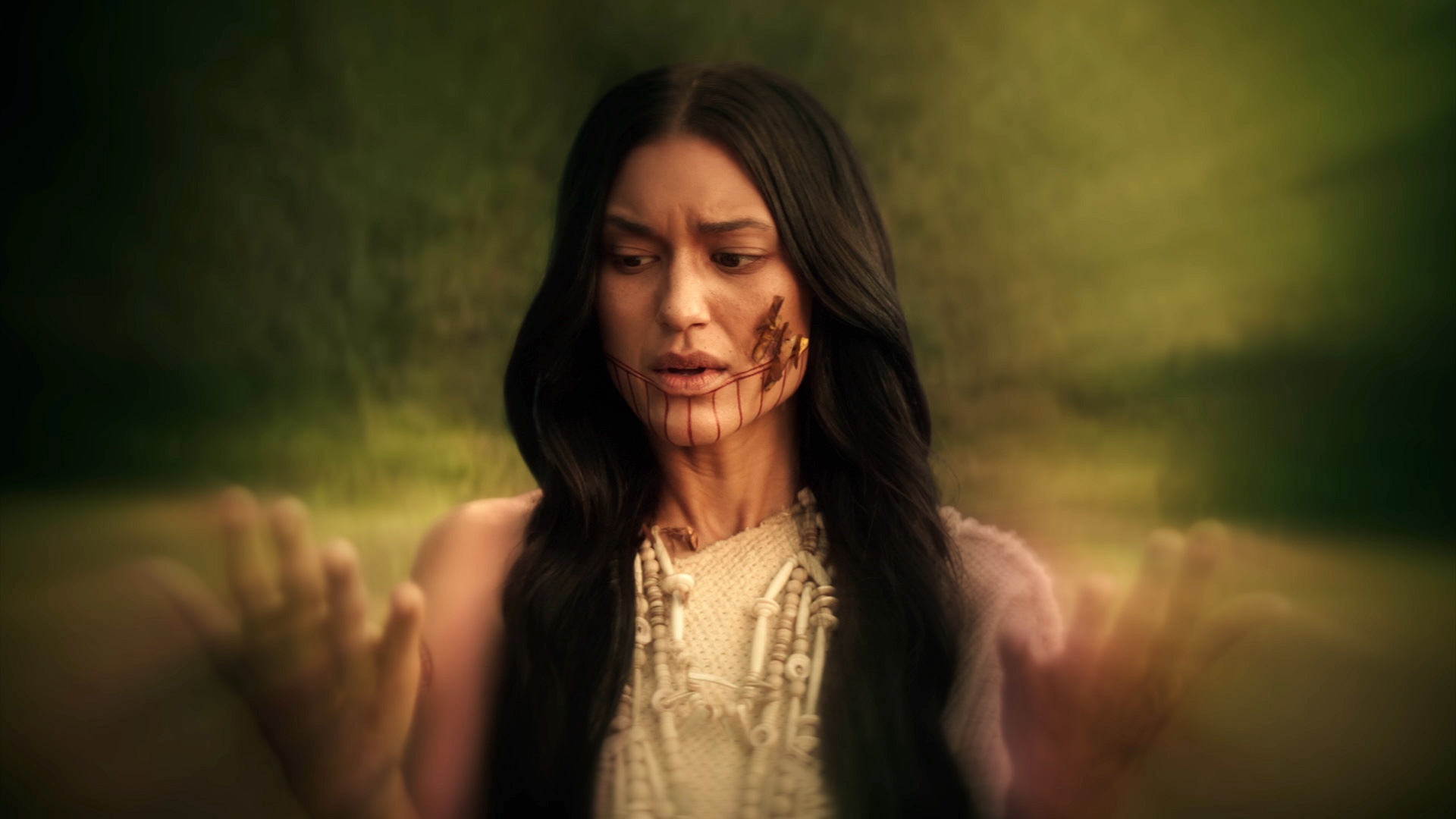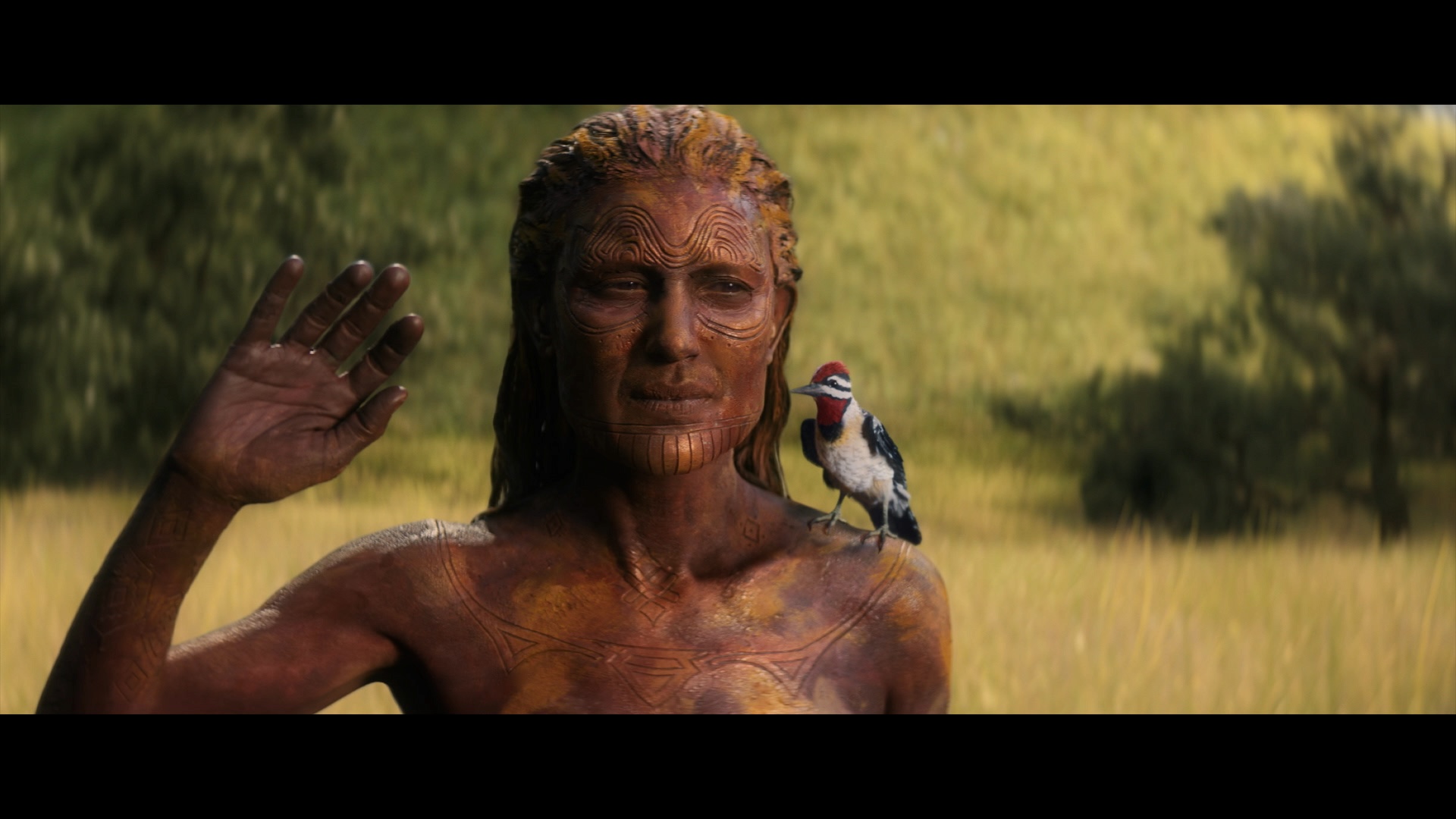Marvel Television’s Echo: How Digital Domain textured a superhero origin sequence with Mari
Digital Domain’s VFX experts reveal how Foundry’s 3D painting software helped represent the myths of a community rarely seen on screen for Marvel’s latest live-action show.

When Echo debuted on Disney+, it made headlines for being the first Marvel Television series rated for a mature audience. Fans, however, knew Echo represented a much more important first. The show’s main character – in pursuit of power and revenge following the events of 2021’s Hawkeye – is the first deaf, indigenous superhero to be portrayed in the Marvel Cinematic Universe.
For the VFX experts at Digital Domain, who’ve worked on everything from X-Men to Avengers: Infinity War, helping to bring such a groundbreaking story to life was a chance to take superhero visuals in a new direction. In a recent conversation with CG supervisor David Liu and texture show supervisor Nick Cosmi, Creative Bloq learned how the team accomplished this with the help of Foundry’s Mari, Digital Domain’s primary texture painting software.
A deep dive into Choctaw lore

“Echo is the story of Maya Lopez, set five months after Hawkeye, as she flees the wrath of her former employer and returns to her hometown,” begins David, who also worked on Spider-Man: No Way Home for Digital Domain. “The story is about Maya going back to her Choctaw roots, so her heritage needed to translate through everything in our visuals.”
To authentically portray Maya’s cultural heritage, Marvel hired representatives from among the Choctaw people to create visual references for the show. These references were then used throughout the series, including the first episode’s opening sequence, which depicts a legend from Choctaw lore. The sequence brings to life the story of the creation of Chafa, the first Choctaw ancestor. Chafa is born in an underground cave with other ancestors, emerging from a pool of water. Suddenly, an earthquake causes the cave to collapse, and Chafa helps the other ancestors escape. As they emerge onto a grassy mound, they shed their clay skin to reveal their human form.
Because of the heavy visual effects involved – including the cave’s destruction and the ancestors’ transition from clay to human – post-production on the sequence involved replacing a practical set and actors with a 3D environment and digital doubles. To do this, Digital Domain’s team worked with Clear Angle Studios to lidar-scan the set and actors, each of which had extensive practical clay makeup applied to their skin. These scans were then used as base references for rebuilding them in 3D. The actors were also rotoscoped out using Foundry’s Nuke compositing software to preserve their performances for the digital doubles.
“Mari allowed us to more perfectly match the exact texture reference of the scan,” says David. “This was necessary on a sequence like this, which involved moments like when Chafa emerges from the pool, where we had both the plate and CG character blending together in the same shot.”
Texturing Echo’s doubles

Digital Domain ended up creating four character assets for the Chafa birth sequence: a male and a female digital double, each with a human and clay version of its mesh. All had the same UV layout. “We started out by wrapping our generic human mesh to Clear Angle’s scan geometry,” adds Nick. “While Mari can transfer maps from the scanned geometry directly to our studio mesh, we found the provided albedo light reflectivity map wasn’t the ideal resolution for production.”
To resolve this, Digital Domain’s artists used additional assets from Clear Angle, which included both the camera layout and the accompanying high-resolution photos of the scanned actors. All usable photos were collected within Nuke. A map was then applied in Nuke to undistort the photos, and complete any necessary colour correction. Finally, the undistorted and colour-corrected images were imported into Mari together with the camera layouts from Clear Angle. Once image ratios were locked, artists were able to re-project much higher quality textures onto the character models.
“While most of the industry tries to move toward procedural textures and materials, photo projection is still the most essential workflow for us at Digital Domain when re-creating 1:1 textured assets, especially for characters,” Nick explains. “I jump back and forth between Nuke and Mari, identifying which images are absolutely necessary to cover the whole asset. And, as long as I check my colours and values along the way, and stay organised by keeping the naming of the photos and cameras similar, it’s possible to create a diffuse pass covering the whole body within a day.”
The Mari difference

By the time Echo’s opening sequence was complete, Mari had proved essential to Digital Domain’s character texturing process. Artists were able to rely on Mari’s painting toolset to bring textures to life by observing photos and matching details, enabling them to deliver complex assets with artist-friendly workflows.
“Our studio has trusted Mari for years with our digital humans,” concludes Nick. “As a traditional painter and illustrator, I love to hand paint as much as possible when working on assets, and Mari has never let me down when it comes to preserving resolution or efficiency. It’s still the engine that drives our department and to which our pipeline is built around. Mari was the ideal solution for Echo, because the tools are user-friendly and provided us with many ways to apply traditional art techniques when matching the work to real-life subjects.”
Daily design news, reviews, how-tos and more, as picked by the editors.

The Creative Bloq team is made up of a group of art and design enthusiasts, and has changed and evolved since Creative Bloq began back in 2012. The current website team consists of eight full-time members of staff: Editor Georgia Coggan, Deputy Editor Rosie Hilder, Ecommerce Editor Beren Neale, Senior News Editor Daniel Piper, Editor, Digital Art and 3D Ian Dean, Tech Reviews Editor Erlingur Einarsson, Ecommerce Writer Beth Nicholls and Staff Writer Natalie Fear, as well as a roster of freelancers from around the world. The ImagineFX magazine team also pitch in, ensuring that content from leading digital art publication ImagineFX is represented on Creative Bloq.
